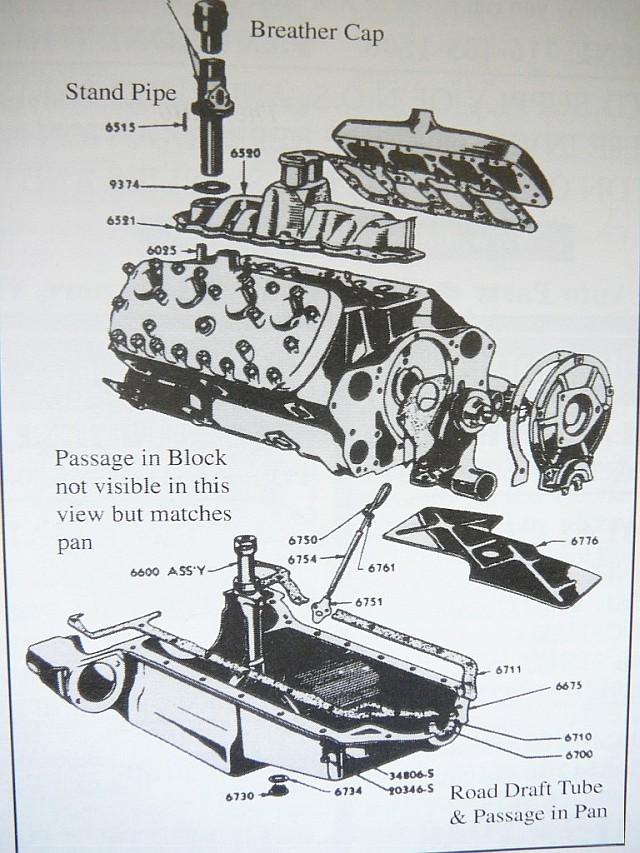Our 32-34 Ford V8's had crankcases that were vented only. In 35-53 they were ventilated. What is the difference? Why did Ford change that? What can we do with the 32-34 engines to improve on their lack of ventilation?
Crankcases are vented because pressure builds up in them due to blow by and heat. An engine that is not vented may distort or burst the oil pan, or perhaps other parts. At best, it would cause oil to leak past gaskets and seals.
The problem with a crankcase that is vented only is that the combustion products that get past the rings include water and acid vapors. These condense into the oil and onto metal surfaces in the engine. The vented only crankcases have no way of purging these corrosive products from the oil. Bearing materials and aluminum pistons are easily damaged by these chemicals.
The engine block and pan were revised in 1935 to provide a road draft tube. It was built into the right front of the pan. This connected to a passage in the block that opened to the front of the valve chamber. The mild vacuum normally created a flow of air onto the filtered oil fill cap, down into the crankcase, then up through the valley and out the road draft tube.
When the engine and oil are at operating temperature, this air flow purges the water and acid vapors, as well as oil vapors, from the inside of the engine.

On 1949-53 engines, the arrangement was a bit different, but the result is similar. The road draft passage to the front of the valley is external with an internal passage pulling vapors out of the crankcase. The breather allows air in at the front of the valley to complete the cycle.
The late system is probably a little better because it separates the vapors from fluid oil better. This gives less oil drippage from the road draft tube.
To add some ventilation to the vented 32-34, consider a hidden PCV valve. It can be plumbed into the bottom front of the intake manifold, drawing from the front of the tappet chamber. It is not as good as the later setups, but burning these vapors is better than breathing them.
If you are using '49 and later engines in your earlier cars, consider using all of the late components. This will preserve the factory ventilation scheme. If you use a later intake on an early engine, or vice versa, crankcase ventilation does not work correctly.
